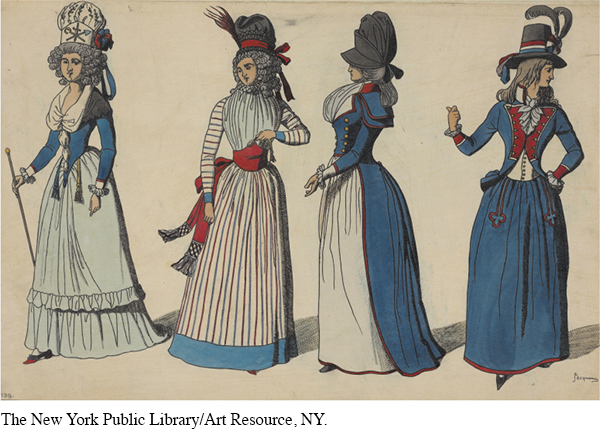The American Promise: Printed Page 239
The American Promise, Value Edition: Printed Page 222
The American Promise: A Concise History: Printed Page 253
France and Britain
The American Promise: Printed Page 239
The American Promise, Value Edition: Printed Page 222
The American Promise: A Concise History: Printed Page 253
Page 239While Indian battles engaged the American military in the west, another war overseas to the east was also closely watched. In 1789, monarchy came under attack in France, bringing on a revolution whose democratic ideals inspired Americans in many states to celebrate the victory of the French people. Dozens of pro-

The American Promise: Printed Page 239
The American Promise, Value Edition: Printed Page 222
The American Promise: A Concise History: Printed Page 253
Page 240Anti–
Support for the French Revolution remained a matter of personal conviction until 1793, when Britain and France went to war and divided loyalties now framed critical foreign policy debates. Pro-
The American Promise: Printed Page 239
The American Promise, Value Edition: Printed Page 222
The American Promise: A Concise History: Printed Page 253
Page 241In May 1793, President Washington issued the Neutrality Proclamation, which contained friendly assurances to both sides, in an effort to stay out of European wars. Yet American ships continued to trade between the French West Indies and France. In early 1794, the British expressed their displeasure by capturing more than three hundred of these vessels near the West Indies. Clearly, the president thought, something had to be done to assert American power.
Washington tapped John Jay, the chief justice of the Supreme Court and a man of strong pro-
Jay returned from his diplomatic mission with a treaty that no one could love. First, the Jay Treaty completely failed to address the captured cargoes or the lost property in slaves. Second, it granted the British a lenient eighteen months to withdraw from the frontier forts. (Despite that leniency, this provision projecting the end of British presence in the Northwest disheartened the Indians negotiating the Treaty of Greenville in Ohio and loomed as a significant factor in their decision to make peace.) Finally, the treaty called for repayment with interest of the debts that some American planters still owed to British firms dating from the Revolutionary War. In exchange for such generous terms, Jay secured limited trading rights in the West Indies and agreement that some issues—
When newspapers published the terms of the treaty, powerful opposition quickly emerged. Citizens’ petitions, newspaper editorials, and public gatherings mobilized public opinion from North to South to a degree not seen before in the early Republic. The debate raised the question of whether citizens could presume to instruct elected officials, or whether they had to accept the judgment of those officials and await the next election to register their displeasure. The negative reactions got ugly. In Massachusetts, disrespectful graffiti (“Damn John Jay!”) appeared on walls, and effigies of Jay along with copies of the treaty were ceremoniously burned in noisy street demonstrations. When the Senate passed the treaty in mid-
The American Promise: Printed Page 239
The American Promise, Value Edition: Printed Page 222
The American Promise: A Concise History: Printed Page 253
Page 242The controversy continued well into 1796. Opponents of the Jay Treaty in the House of Representatives called for hearings on the matter, demanding that the president disclose secret diplomatic documents. Washington refused. The House lacked constitutional authority to vote on treaties, but it did have primary power over all spending bills. Anti–
The year long struggle over the Jay Treaty revealed an emerging and as yet uncharted role in politics for public opinion, voiced by an aroused citizenry and frequently managed and shaped by newspaper editors and local political clubs. It also brought to the fore a bitter division among elected politicians that emerged along the same lines as the Hamilton-